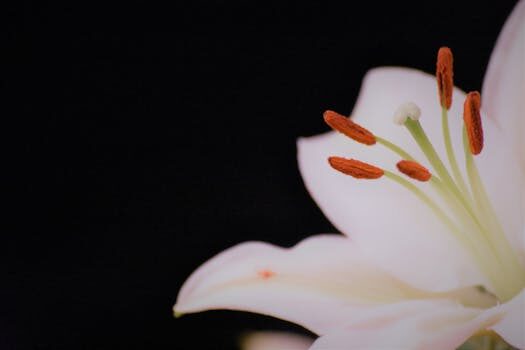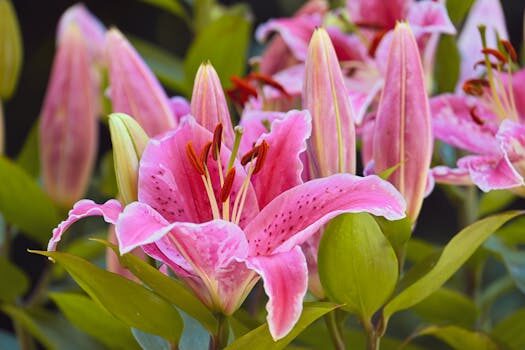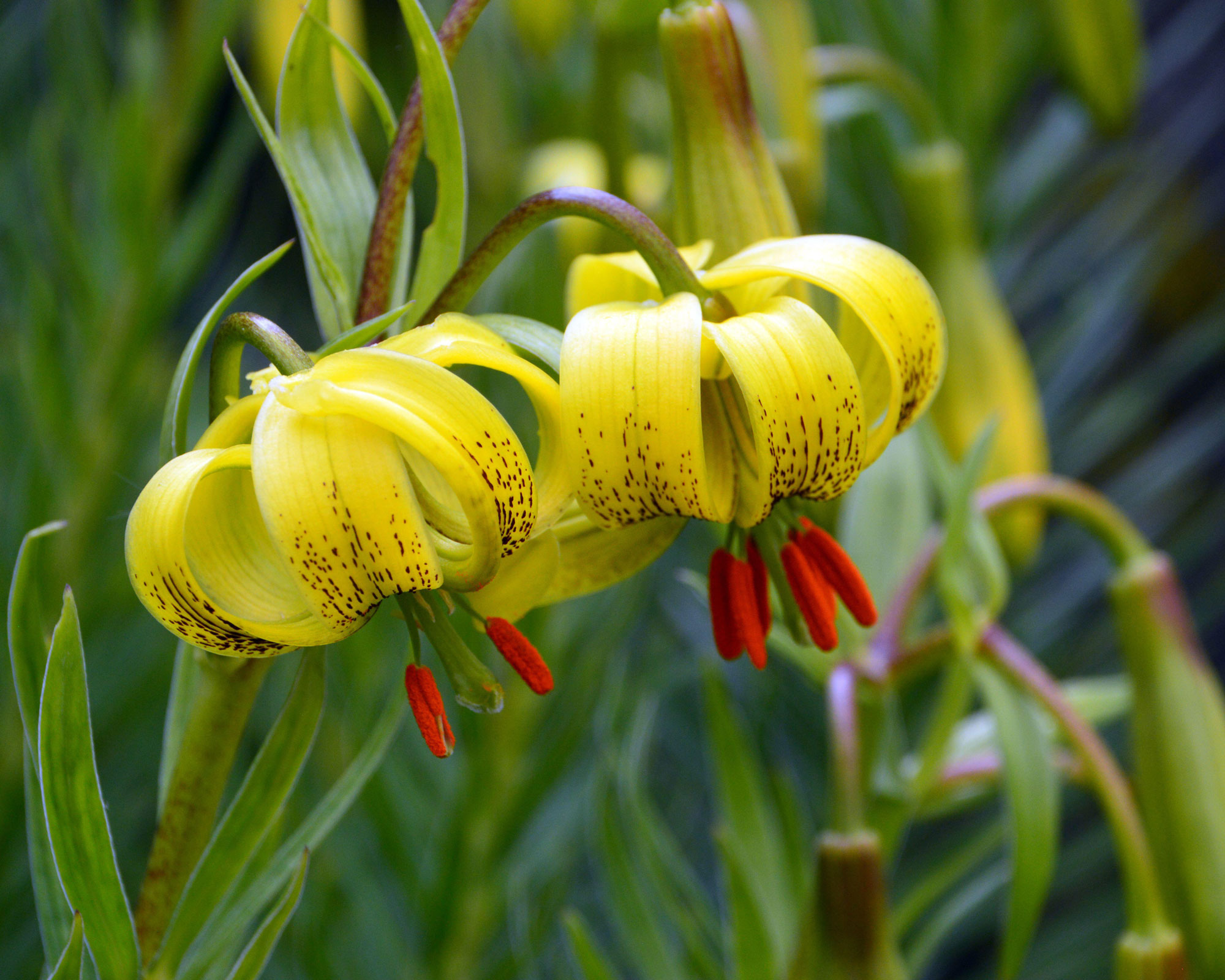Lilies are a cornerstone of the floral world, celebrated for their elegance, variety, and striking presence. These perennials hail from different regions across the globe and captivate with their beauty and ease of care. Whether you’re a seasoned gardener or a budding floral enthusiast, the types of lilies: 16 gorgeous varieties to choose from offer a stunning array to enhance any garden.
With over 2,000 varieties, true lilies (genus Lilium) boast a rich history and cultural significance, making them more than just a visual treat. They range from bold Asiatic lilies to fragrant Oriental hybrids, each group adapting well to a variety of garden conditions.
What are the different types of lilies to grow?
Choosing the right lily for your garden involves understanding the diversity within the genus. Asiatic lilies, known for their sturdy stems and wide color range, bloom early and are perfect for beginners. Oriental lilies, on the other hand, offer intoxicating fragrances and large blooms, ideal for a statement piece in your late summer garden.
For those seeking dramatic height and trumpet-shaped flowers, Trumpet lilies are a go-to, while Tiger lilies bring a touch of the wild with their spotted petals. Other noteworthy varieties include Martagon lilies, with their dainty, downward-facing flowers, and the rare and delicate species lilies that are a collector’s dream.
Diverse varieties of lilies for your garden can also be found in hybrids like the Orienpet, which combine the best traits of Oriental and Trumpet lilies. For a low-maintenance garden, daylilies, though not true lilies, offer a hassle-free option with a day-long lifespan of each bloom.
Do you need to deadhead all types of lilies?
Deadheading, the process of removing spent flowers, is beneficial for many lily varieties as it encourages the plant to focus its energy on bulb growth rather than seed production. While not strictly necessary for all types, it generally promotes healthier plants and possibly more blooms in the following season.
Asiatic and Oriental lilies, in particular, benefit from deadheading, as it can prolong their flowering period and enhance their vigor. However, varieties such as the Martagon lily do not require deadheading as they can self-seed and naturalize in the garden.
When deadheading, it’s important to leave the stem and foliage intact, as they continue to photosynthesize and store energy in the bulb for the next year. Low-maintenance types of lilies for beginners may not require deadheading, but the practice is often considered good garden hygiene.
What are the most popular types of lilies?
The lily’s popularity spans the globe, with certain varieties standing out for their remarkable features. The ‘Stargazer’ Oriental lily, with its vibrant pink petals and striking spots, is a favorite for its dramatic blooms and strong fragrance. The ‘Casa Blanca’ lily is another Oriental variety revered for its large, pure white flowers and heavenly scent.
Asiatic hybrids are popular for their early bloom time, wide color palette, and ease of care, making them a top choice for gardeners of all levels. The ‘Tiny Series’ of Asiatic lilies, bred for their compact size, are well-suited for container gardening and small spaces.
- Stunning lily varieties for spring gardens include the vibrant and contrasting ‘Fire King’ Asiatic lily and the elegant ‘Black Beauty’ lily with its deep red, almost black flowers.
- Trumpet lilies like the ‘African Queen’ with its large, apricot-hued flowers are revered for their statuesque presence and sweet perfume.
- Tiger lilies, with their unique spotted petals and resilient nature, remain a garden classic.
When considering the choosing the right lilies for your landscape, it’s also essential to factor in the bloom time, color, and height that best suit your garden design and personal taste.

How to identify types of lilies?
Identifying lilies can be an enjoyable pursuit for garden enthusiasts. True lilies have six petal-like segments that can be either trumpet-shaped, bowl-shaped, or with recurved petals. The arrangement of leaves on the stem, which can be whorled, alternate, or spiral, along with the position and direction of bloom, provides clues to the variety.
The flower’s color and pattern, such as spots or brush marks, are distinct features that can help distinguish between types. Asiatic lilies, for instance, often carry spots, while Orientals are known for their prominent streaks and brush marks.
Bulb shape and size can also be indicative of the lily type, as Asiatics usually have smaller, rounder bulbs compared to the larger, elongated bulbs of Oriental and Trumpet lilies. Furthermore, the presence or absence of fragrance can be a telling characteristic, with many Asiatic lilies being unscented, in contrast to the strong, sweet fragrance of many Oriental lilies.
What are the key characteristics of true lilies?
True lilies belong to the genus Lilium and are characterized by their bulbous root system, which differs from rhizomatous plants like daylilies (Hemerocallis), which are not true lilies. A true lily bulb consists of overlapping scales, without a protective outer layer, requiring careful handling to avoid damage.
Their stems are erect and leafy, with leaves arranged in whorls, spirals, or alternately up the stem, culminating in a spectacular floral display. The blooms of true lilies typically have six tepals – the collective term for petals and sepals when they are indistinguishable from each other – and six stamens.
Lilies come in a variety of forms, from the upward-facing blooms of Asiatic lilies to the outward-facing flowers of Tiger lilies and the downward-facing blossoms of the Turk’s cap (Martagon lilies). Each lily’s distinct characteristics, such as flower shape, bloom orientation, and leaf arrangement, contribute to its unique beauty and appeal.
How do lilies adapt to different garden conditions?
Lilies are versatile plants that can adapt to a wide range of garden conditions, from full sun to partial shade. They generally prefer well-drained soil rich in organic matter and a location that receives at least six hours of sunlight per day.
Asiatic lilies are particularly adaptable, thriving in both sunny and semi-shaded areas, making them suitable for a variety of garden settings. Oriental lilies, while preferring a bit more shade, can also do well in sunnier spots if provided with cool, moist soil conditions.
Many lily varieties have a natural propensity to spread and naturalize in the garden. With minimal care, they can return year after year, expanding their presence and bringing lasting beauty. The ability to tolerate a range of soils, from acidic to slightly alkaline, adds to their versatility and ease of cultivation.

Fragrant lily varieties, such as Orientals, are particularly well-suited to evening gardens, where their scent can be most appreciated during the cooler parts of the day. Conversely, some lilies, like the Tiger lily, can tolerate drier conditions and are more drought-resistant.
For a visual treat, let’s take a moment to enjoy a video showcasing some of the exquisite varieties of lilies that you might consider for your garden:
Related questions on choosing and growing lilies
What are the different types of lilies to grow?
With so many varieties to choose from, selecting the right type of lily for your garden depends on several factors, such as climate, soil, and personal preference. Asiatic, Oriental, Trumpet, and Tiger lilies are some of the most popular and widely available types. Each has its unique characteristics and ideal growing conditions, offering options for nearly any garden setting.
For colder regions, Asiatic lilies are a hardy choice, while the Oriental varieties are more suited to temperate zones. Those looking for a tropical flair might opt for Trumpet lilies, which also tend to be more heat-tolerant. Tiger lilies are a resilient option that can thrive in a range of environments.
Do you need to deadhead all types of lilies?
Deadheading can be beneficial for many lily types as it prevents seed production and encourages the plant to store energy in the bulb. However, it’s not a strict requirement for all lilies, especially those that you might want to naturalize or proliferate through self-seeding.
It’s mainly the hybrid varieties, like Asiatic and Oriental lilies, that benefit from deadheading, as it can lead to healthier plants and more robust blooms in subsequent years. Species lilies and those grown for naturalizing purposes can be left to seed.
What are the most popular types of lilies?
The most popular types of lilies are those that offer striking visual appeal and ease of care. The ‘Stargazer’ and ‘Casa Blanca’ Orientals remain favorites due to their dramatic blooms and rich fragrances. Asiatics are also popular for their diverse colors and early flowering period, making them accessible to novice gardeners.
Trumpet lilies, with their large, showy flowers and intoxicating scent, are sought after for their commanding presence. And the hardy Tiger lily, with its distinctive spots, continues to be a garden staple.

How to identify types of lilies?
Identifying lily types can be simplified by observing their bloom shape, leaf arrangement, and bulb structure. True lilies will generally have six tepals and stamens, with varying petal shapes and orientations.
Asiatic lilies often feature upward-facing blooms and come in a wide color range, while Orientals are known for their large, outward or downward-facing flowers with strong fragrances. Trumpet lilies are distinguished by their elongated trumpet shapes, and Tiger lilies by their recurved tepals and spots.
Are lilies poisonous to cats or dogs?
It is important to note that many lily varieties are highly toxic to cats and can cause kidney failure if ingested. All parts of the plant, including the pollen, can be dangerous. Dogs are typically less affected but can experience gastrointestinal upset if they consume lilies.
Pet owners should exercise caution when introducing lilies into their home or garden and consider pet-safe alternatives or ensuring lilies are out of reach. Immediate veterinary attention is required if a cat ingests any part of a lily plant.
How do lilies adapt to different garden conditions?
Lilies are adaptable to a range of conditions but perform best in well-drained soil with a good amount of sunlight. While Asiatic and Tiger lilies are known for their hardiness and flexibility, Oriental and Trumpet lilies may require more specific conditions, such as protection from intense afternoon sun and wind.
Most lilies will benefit from mulching to keep their roots cool and conserve moisture. They can be grown in gardens, raised beds, or containers, provided their basic needs for drainage and sunlight are met.
Incorporating lilies into your garden not only adds a touch of beauty but also connects you to a plant with deep historical roots and cultural significance. Whether they are a symbol of purity, celebration, or mourning, lilies hold a special place in the hearts of many. With the types of lilies: 16 gorgeous varieties to choose from, your garden can become a canvas of colors, fragrances, and textures that celebrate the diversity of this extraordinary genus.
 Black bottom pools are the divisive new backyard trend you need to know about
Black bottom pools are the divisive new backyard trend you need to know about

I love how this post captures the incredible variety and beauty of lilies! It’s so cool to see how each type has its own unique charm and how they can fit into different garden styles. Definitely feeling inspired to try planting some Asiatic lilies for their vibrant colors and easy care. Thanks for sharing all these helpful tips!
I love how this post breaks down the beautiful world of lilies! It’s amazing to think there are so many varieties to choose from, each with its own unique charm. This is super helpful for someone like me who’s just getting into gardening. The tips on deadheading and choosing the right type for different garden settings are especially useful. Definitely feeling inspired to add some lilies to my garden this season!